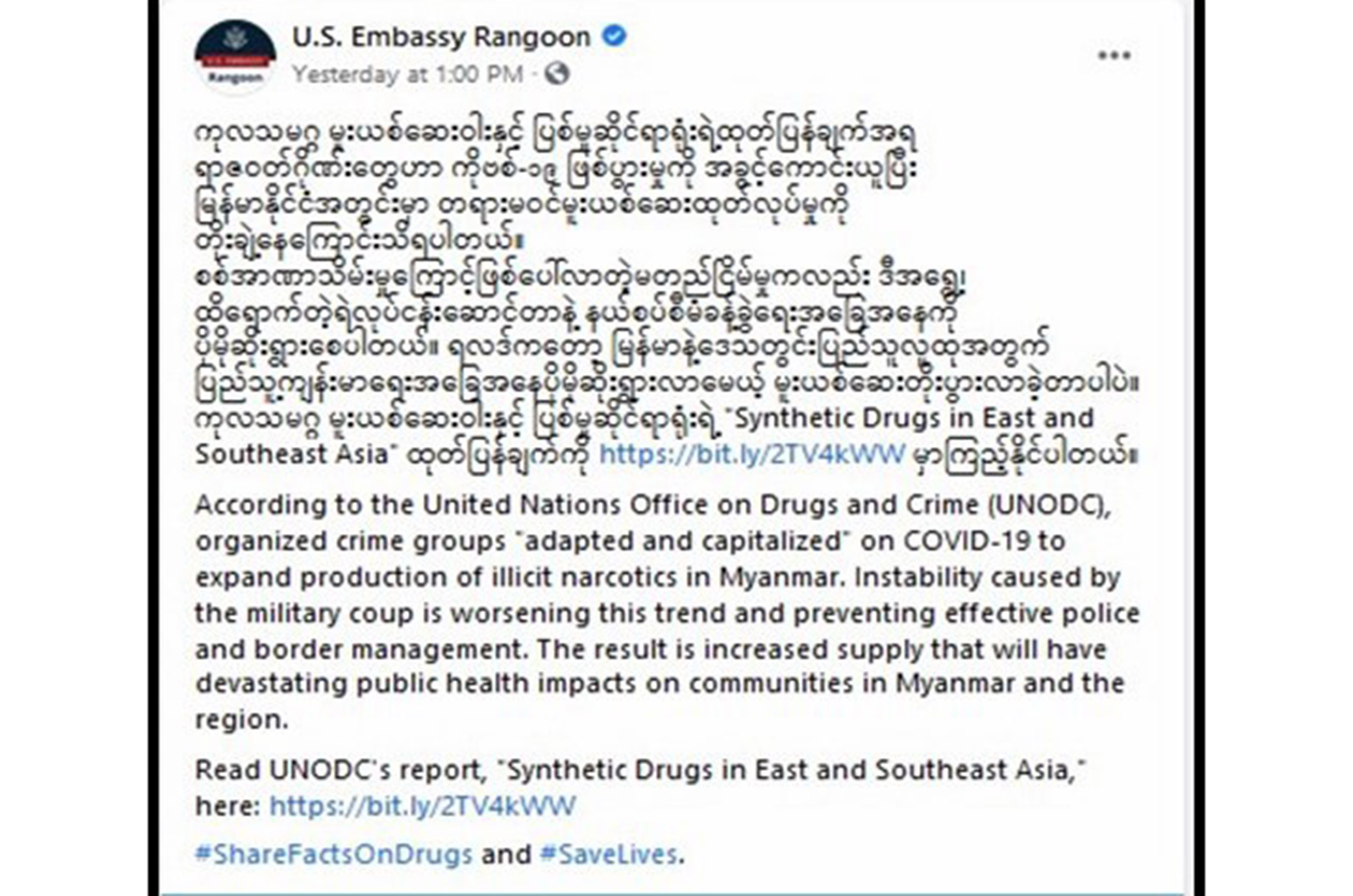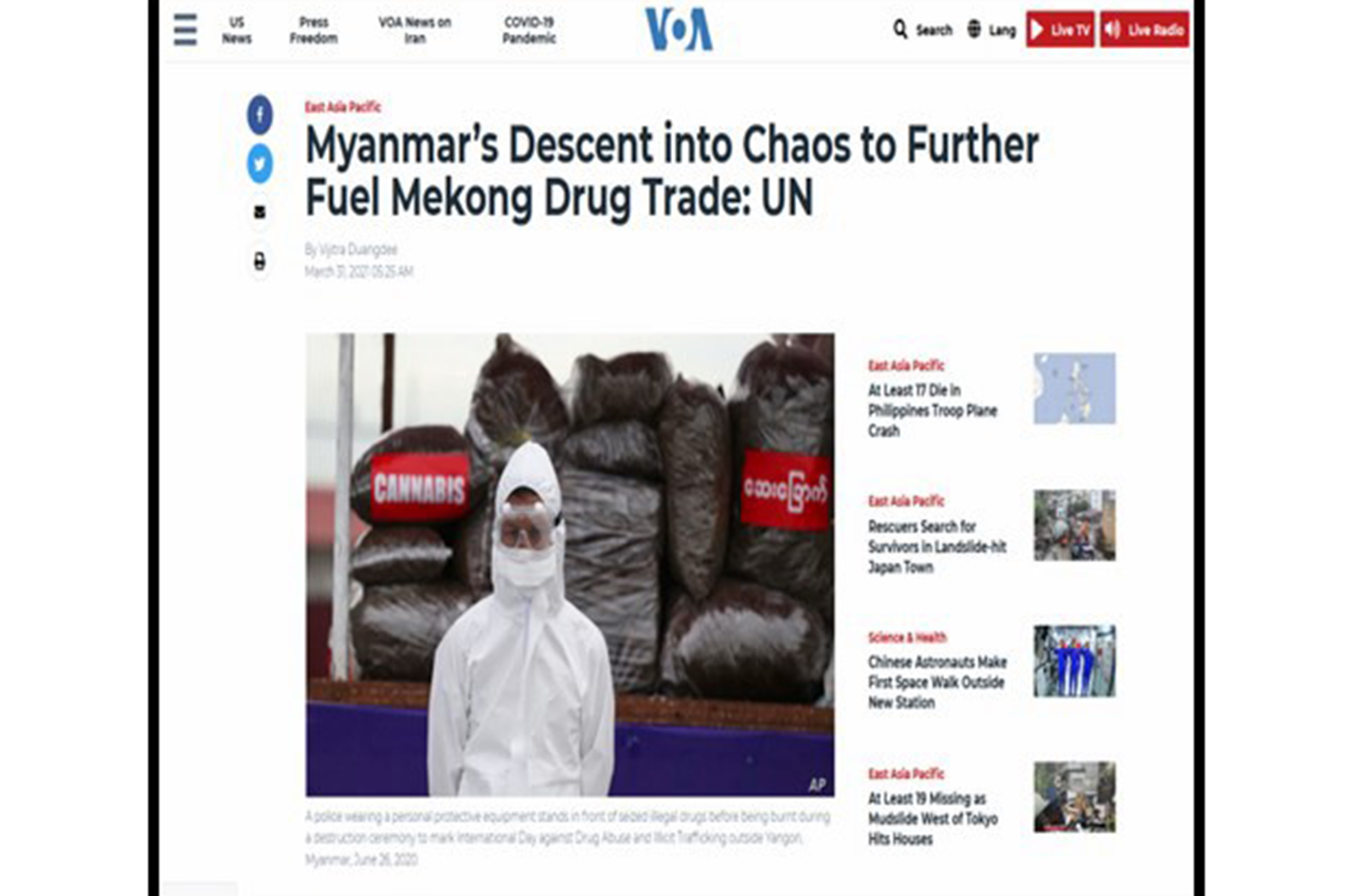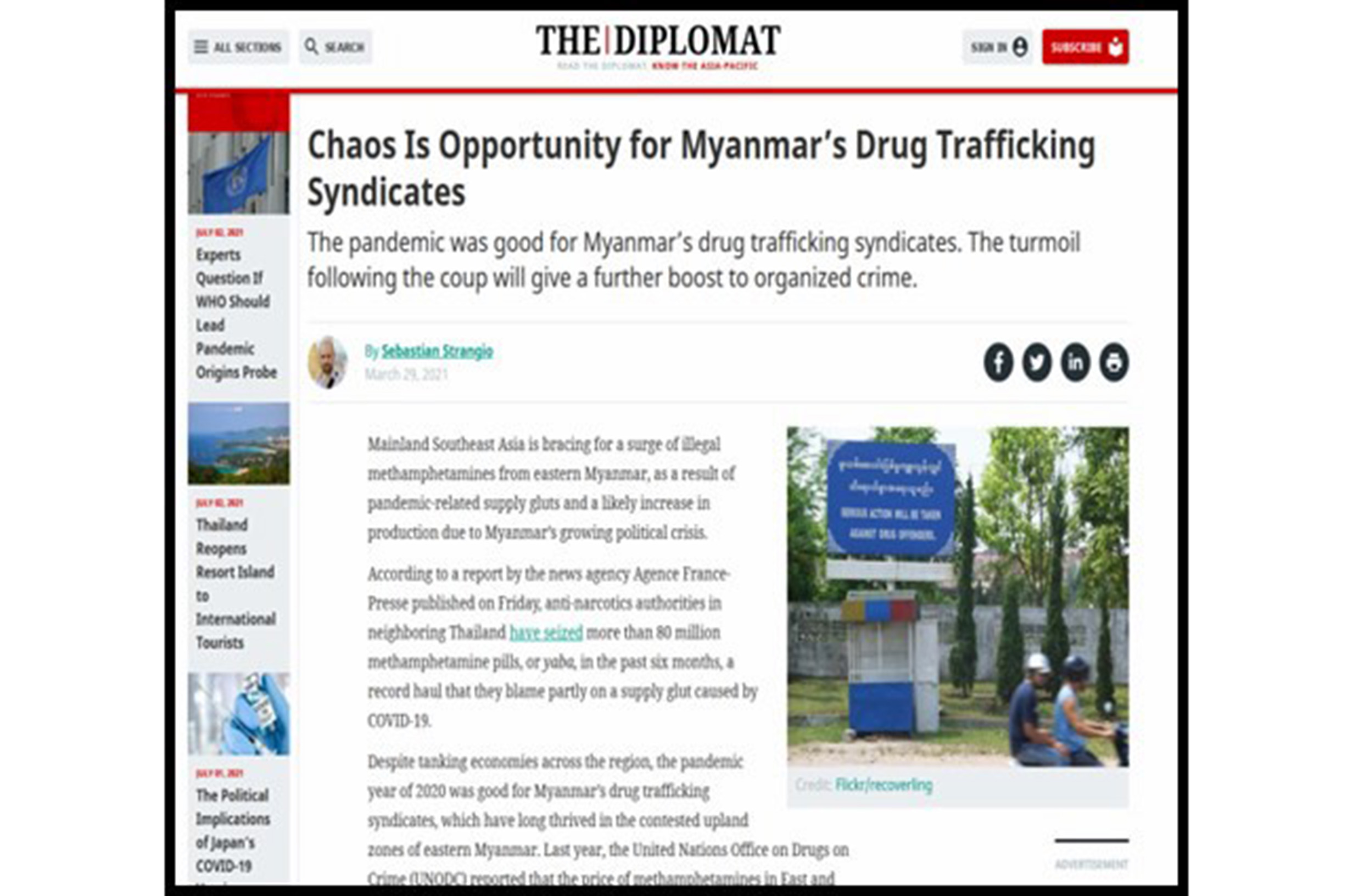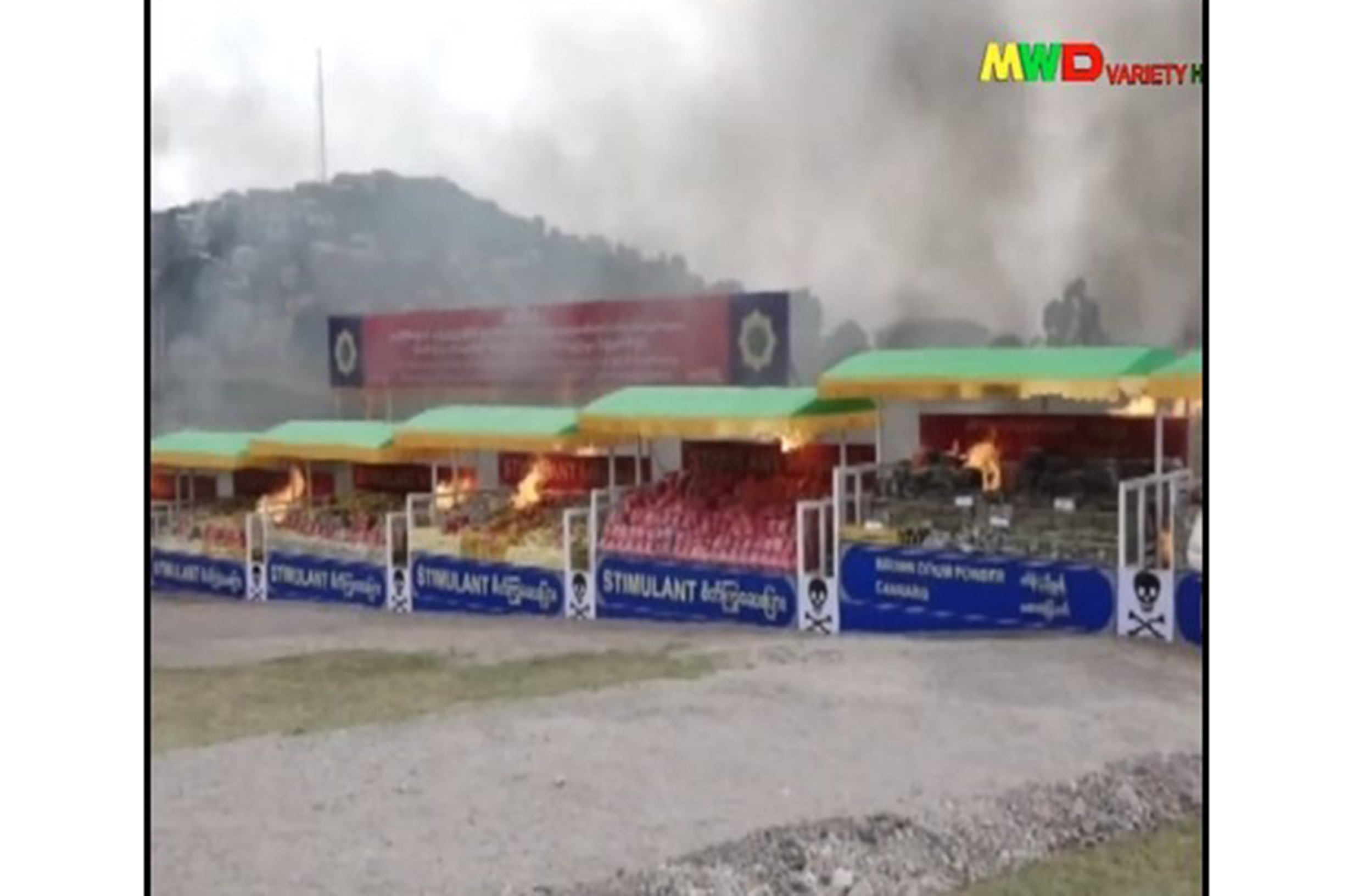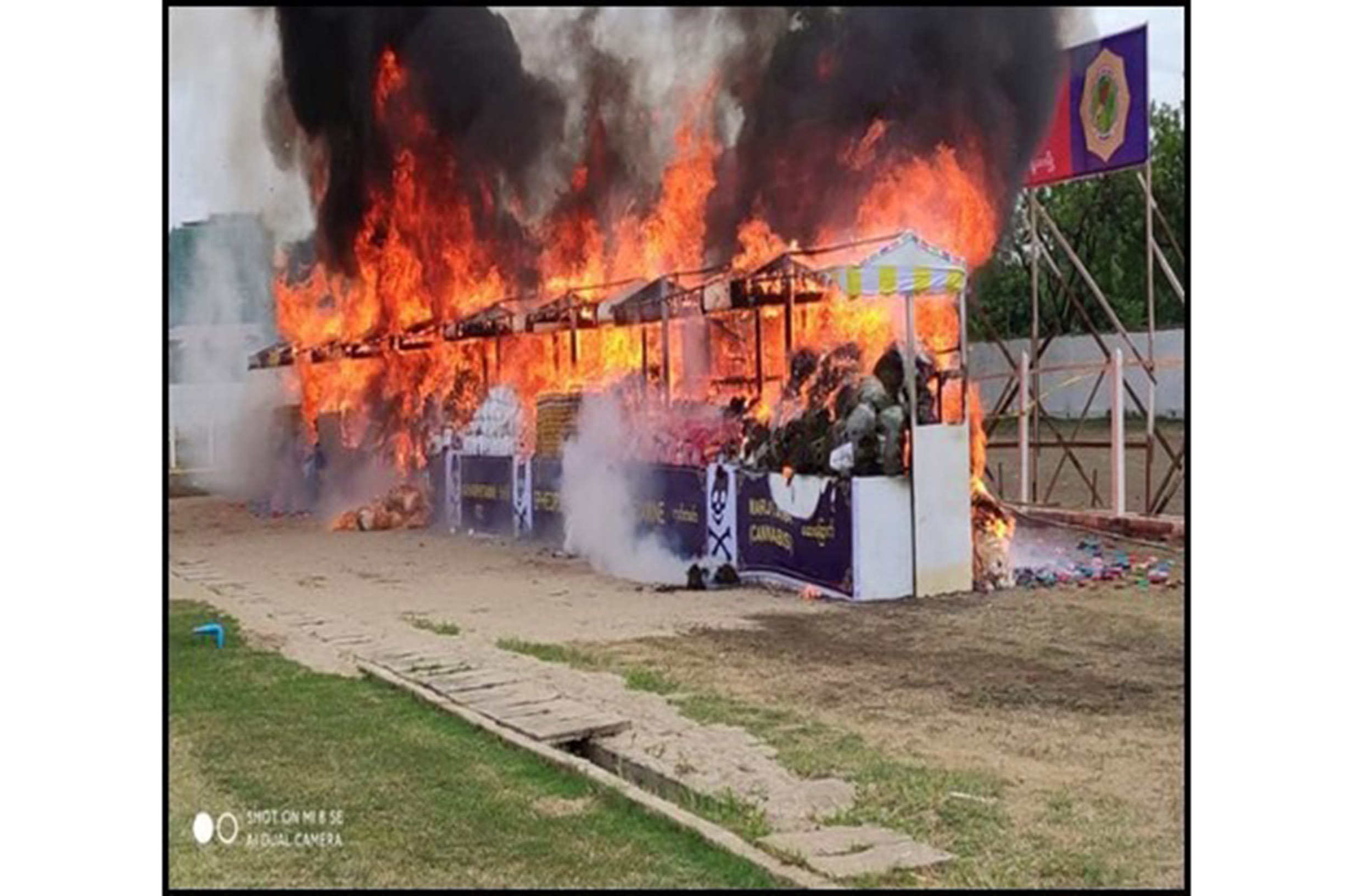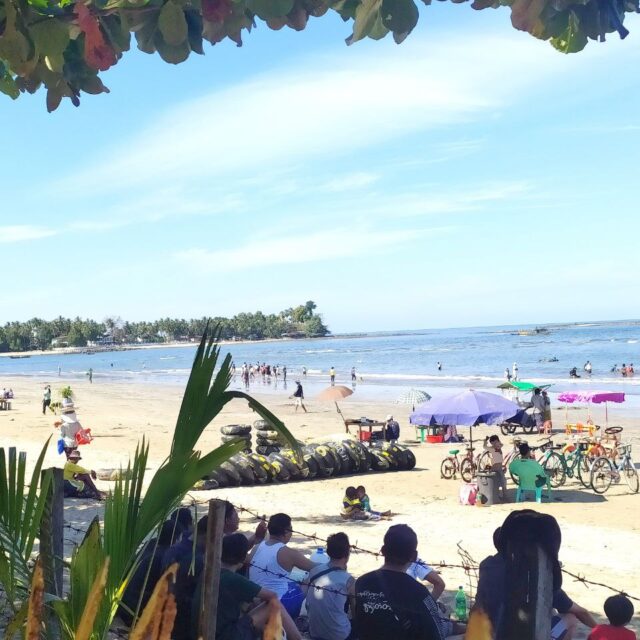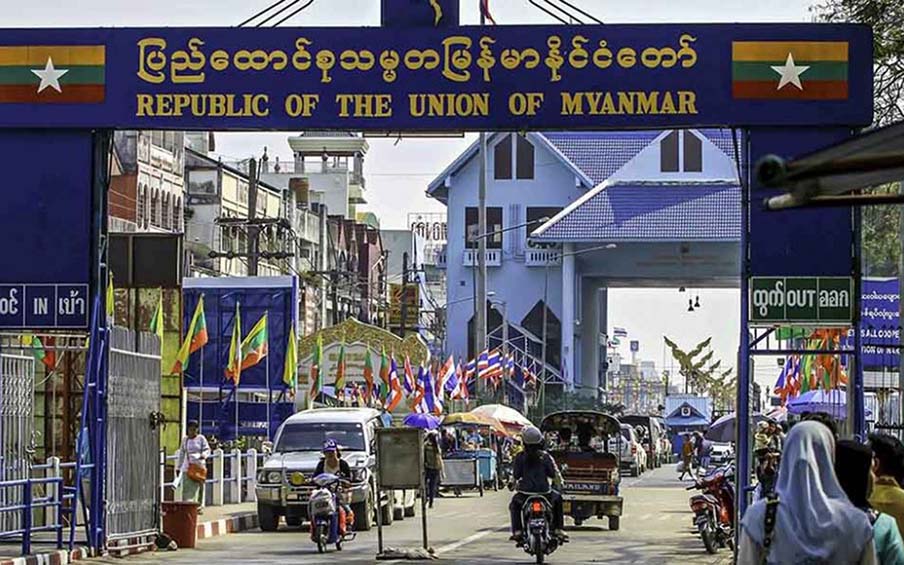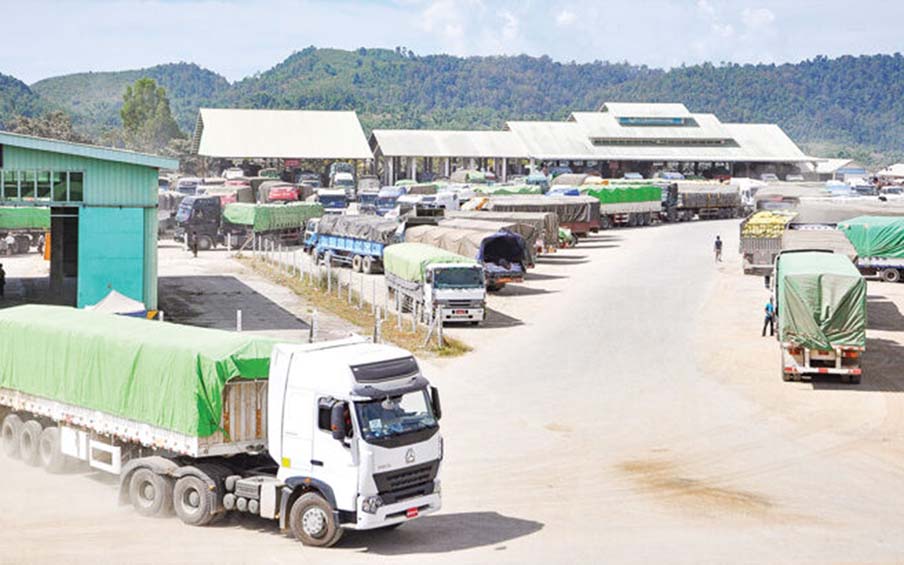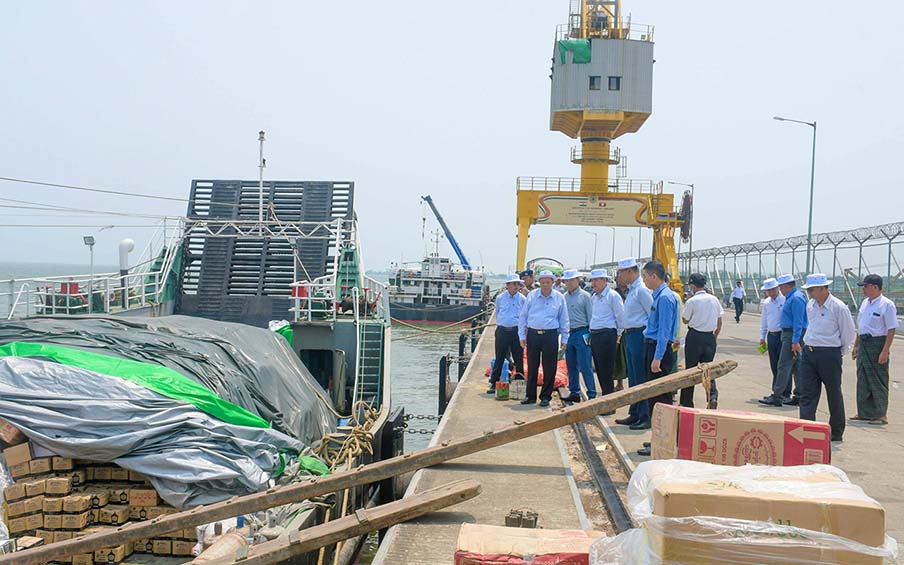By Aung Shinn
Local media outlets surviving with foreign supports and the external media agencies with pessimistic views are describing fake news and misinformation on the current political developments in Myanmar. It is also seen that some western diplomatic communities and UN agencies are one-sided statements based on such fake news reports.
It is obvious that most of their statements with political intention are to disrupt the current situation of Myanmar breaching the media ethics and diplomatic ethics without taking referencing the news reports and information released by State government and relevant departments.
Fake news and narcotic drugs issue
Particularly, the said actors are exerting all-round efforts to pressure the State Administration Council temporarily assuming the State’s responsibilities in conformity with law. In this regard, a statement was found on the Facebook page of U.S Embassy Rangoon one-sidedly blamed on the incumbent government of Myanmar by using the apolitical matter of drug issue. The statement portrayed the current political situation of Myanmar as if it worsen the production of illicit narcotics in the country taking reference of the report of United Nations Office on Drugs and Crime-UNODC.
In reality, the report of UNODC described that the drugs trade did not fall despite the COVID-19 pandemic and the crime groups expend their narcotic drug markets in the region. The report is primarily based on the data of 2020 without any description related to the political affairs of Myanmar. It was also found that the report described the anti-narcotic drug measures of Myanmar government and seizures of the drugs with evidence.
Moreover, the photo used in the statement of the U.S Embassy was totally not related to UNODC and just the photo of the post described by United Nations Office for the Coordination of Humanitarian Affairs (OCHA)-Myanmar on its twitter page. As the post was described by using such misinformation, objection comments of Myanmar people appeared below the post and the photo was later changed. Hence, the statement of the U.S Embassy on its Facebook page was just a one-sided accusation using wrong and inaccurate information by burying their heads in the sand about the anti-narcotic drugs measures of the State Administration Council.
Similarly, some renowned media agencies are also expressing fake news exaggerating and highlighting only what they want by ignoring the government’s efforts to eradicate narcotic drugs in the time of the State Administration Council. It is also observed that most of such descriptions have certain intentions to add more complexities in the current political situations, to bring pessimistic altitudes from international communities towards Myanmar. To be frank, they are waging information and media war against Myanmar.
Anti-narcotic drug measures during the term of the State Administration Council
The successive administrations of Myanmar despite practicing various kinds of political systems have combatted against narcotic drugs of common enemy as a national duty. At present, the State Administration Council also continues the effective anti-narcotic measures. Due to the relentless efforts of the Council, from 1 February 2021 since the Council has assumed the State’s responsibilities to 30 June, 1,043.052 kg of heroin, 765.416 kg of raw opium, 103.23 kg of black opium, 28.761 kg of marijuana, 99,474,830 stimulant pills, 6,396.374 kg of ICE and 40,721.566 kg of other related items, total worth of over K317.09 billion (US$193.1 million). The detailed seizures are shown in the follow table.

Narcotic Drugs Seized from 1 February to 30 June 2021
The seizures have proved the relentless efforts of the State Administration Council to eradicate narcotic drugs, the common enemy of mankind, which is apolitical. On the other hand, it is sadly found out that some western powerful countries are still not able to see the truth and one-sidedly blaming on the State Administration Council by neglecting its efforts to eradicate the narcotic drugs in its short term.
Regarding the narcotic drugs eradication, a distinct act of the State Administration Council was exposed to the world on 26 June. To mark International Day Against Drug Abuse and Illicit Trafficking, the Council simultaneously held the ceremonies of burning down the seized narcotic drugs in Yangon, Mandalay and Taunggyi. The drugs burnt down included over 3,870 kg of raw opium, 2,562 kg of heroin, over 224 millions of stimulant tablets, 14,080 kg of ICE, over 739 kg of marijuana, over 289 kg of ketamine, 12.5 tons of caffeine, other illegal drugs and 62 types of chemical substances totalling in K1,068 billion (over US$ 667 million). The ceremonies were attended not only by the governmental officials but also by international organizations and news reports were also released in timely manner. Although the true news reports have been released to let them be known and heard, such irregular blamings can be deemed as dishonest manners.
Internal armed conflict and illicit drug economy
Regarding the current political situations, the news reports and contents to impose all-round sanctions on Myanmar have appeared again in the global political arena. Looking back the history, it was obvious that such sanctions hindered the economic development of the State and led to only the plights of the common people. All countries and UN have already known that such means did not work for the democratization process of Myanmar and its development as well.
When the economic sanctions add the current armed conflicts and the existence of a number of armed organizations in Myanmar, its implications inflict considerable damages to the socio-economic conditions of border regions. Consequently, businesses of producing synthetic drugs which can generate a lot of money in a short time become primary income sources of Ethnic Armed Organizations (EAOs) for their survival and arming. The drug-related businesses are one of the reasons for holding their arms.
Hence, one of the root causes of the narcotic drug issue in Myanmar is the direct or indirect involvement of EAOs in producing and distributing narcotic drugs as the important source of their primary incomes for their survival.

